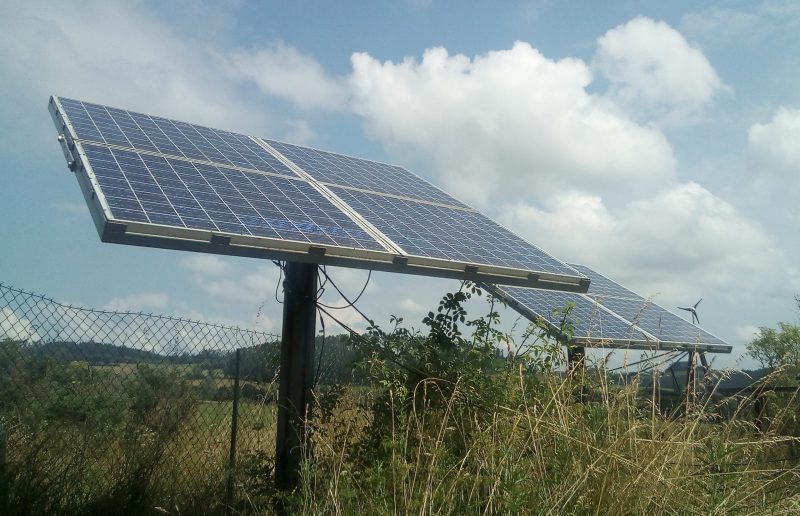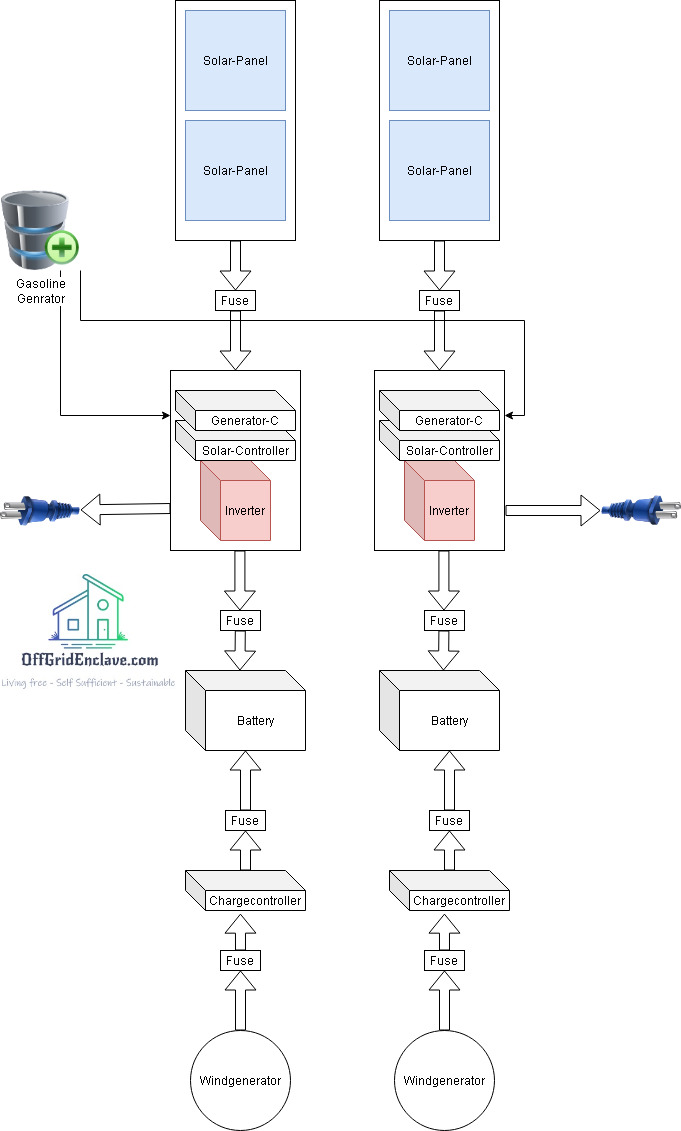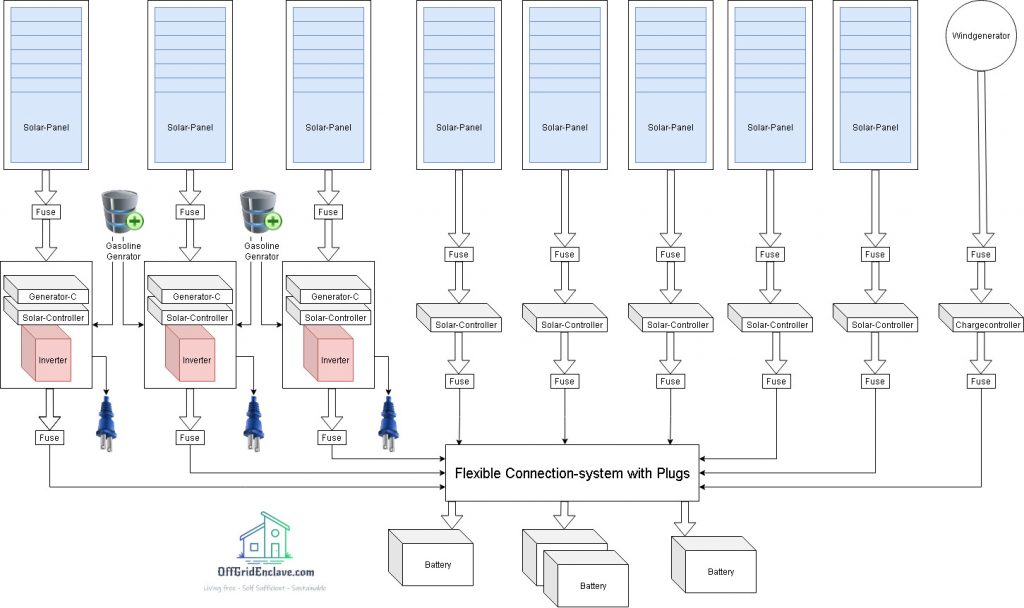Systèmes d'alimentation hors réseau avancés

Advanced OffGrid Power-systems
The Information here are more advanced setups. It is assumend that the reader has the basic knowledge of solaire, onduleurs, contrôleurs de charge, batteries, générateurs et basic solar-system types. Pour des questions ou des commentaires, rejoignez notre Un merci spécial à Sylfix, membre de la communauté OffGridEnclave, pour avoir fourni des photos et des informations pour le présenter en tant que projet.
Redundancy
If a vital system breaks and you do not have a local backup installed or a workaround is deemed impossible you might be in a position of having to source things quickly. Having systems setup from the start that take that into account can ease a lot of stress and basically removes the need for spending “emergency $/€” to workaround something until it gets properly replaced. This should also be taken into consideration for the budget.
Example: having a generator is a legit “workaround” for your electric system, bon à utiliser lors de l’entretien des batteries, changer les câbles, installer de nouveaux panneaux solaires, etc., but it is not a “backup” for when your main inverter dies. Il est exponentiellement plus coûteux de gérer un ménage complet 24/7 on a generator, to maintain everything while you need to wait for your new inverter to arrive. The proper backup would be to have a 2 configuration des onduleurs, utilisez-en un par défaut et utilisez le deuxième si celui par défaut échoue. If it does, casually order a new inverter; and when it arrives run your generator for 20 minutes tout en remplaçant celui cassé.
Redundant Off-Grid Power-system
For our redundant OffGrid power-system we will be using “OffGrid Inverters”. These house a inverter, solar-chargecontroller, generator/grid-chargecontroller and electronics in a single unit. You can connect to these units via USB and configure them according to your needs.

The idea behind this approach is a maximum of flexibility and redundancy. Having two inverters gives plenty of options for the household, and eases the load on each for bigger houses.
It is recommended to not “hardwire” the battery to utility connection but use plugs and flexible cables. (These plugs are usually used for electric forklifts). If need be you can then always connect any device to any battery. For bad weather conditions this can be great, you have the option to connect all your solar-lines to a single battery. No matter which part breaks or needs maintenance in the setup, your power is sustainable.
TheHappyBunker Power-system

A certified, tested and running system that is used in the HappyBunker project. The location is central Europa in the Czech mountains. This is built to sustain electricity during prolonged periods of fog, clouds, snow and general bad conditions.
Pour des questions ou des commentaires, rejoignez notre Un merci spécial à Sylfix, membre de la communauté OffGridEnclave, pour avoir fourni des photos et des informations pour le présenter en tant que projet.